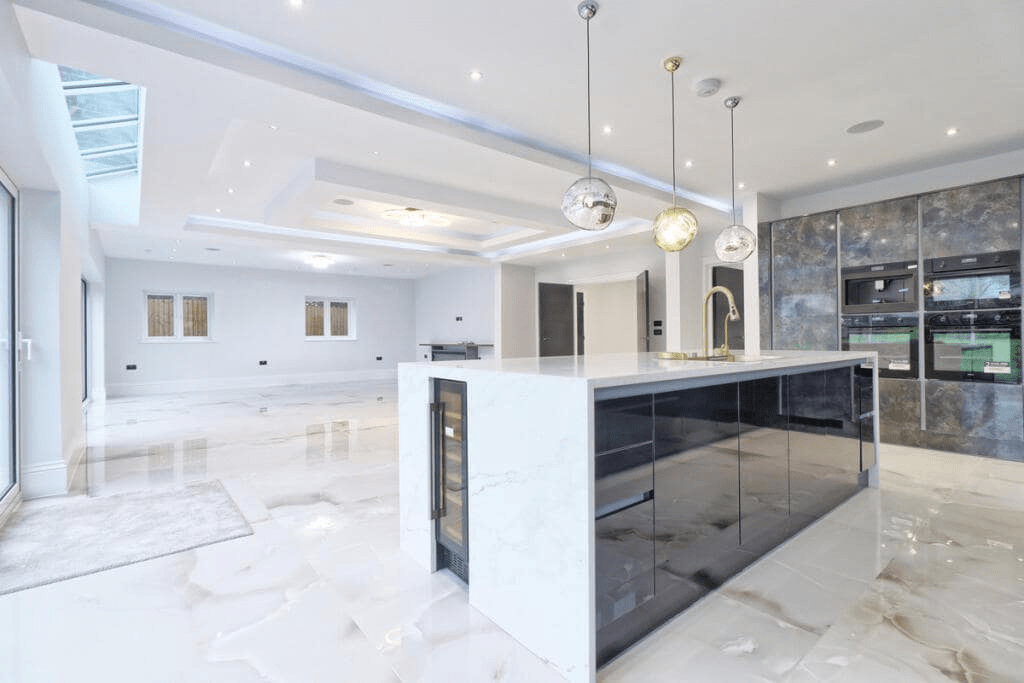Building vs. Buying a Luxury Home: Which Is Right for You?
September 26, 2025

Choosing your dream home is one of life’s most significant milestones. For many people, the question isn’t whether to move, but how best to create a home that reflects their lifestyle, aspirations and long-term goals. Should you build a new luxury property from scratch, or is it better to buy an existing home or off-plan development?
It all depends on what matters most to you: individuality, convenience, budget or timeframe. In this blog, we’ll explore the pros and cons of each option to help you decide which path is right for you.
The Case for Building a Luxury Home
When you build, you’re creating more than just a property — you’re building a home around your exact needs.
Pros of Building:
-
Custom Design – Everything from the floor plan to the finishes is chosen by you, so the result is a home that fits your lifestyle perfectly. Whether that’s a spa inspired bathroom, a home cinema or a seamless indoor outdoor kitchen, your vision drives the design.
-
Modern Technology – Building new means you can incorporate the latest in smart home systems, renewable energy and eco friendly materials, making your home both future proof and efficient.
-
Quality Guarantee – A bespoke build gives you confidence that every stage has been completed to the highest standard, with no hidden surprises behind the walls.
-
Long Term Value – New homes require less maintenance and hold their value well, particularly in high demand areas such as London and the South East.
Cons:
-
Building takes time — 12-18 months depending on scale and planning requirements.
-
You’ll be more involved in the process, which can be exciting but also requires commitment.
The Case for Buying a Luxury Home
For some, convenience trumps customisation. Buying an existing home, whether a period property or a newer development, can be the easier route into luxury living.
Pros of Buying:
-
Immediate Move In – The biggest advantage is speed. Once contracts are exchanged you can move in straight away without waiting for construction.
-
Established Character – Many buyers fall in love with period features, mature gardens or locations that simply can’t be replicated in a new build.* Location Certainty – You see the house in its real setting — the neighbourhood, views and surrounding amenities are all known quantities.
Cons:
-
You may have to compromise on layout, design or features.
-
Older homes come with higher maintenance costs.
-
Retrofitting modern systems like underfloor heating or smart tech can be disruptive and expensive.
Bespoke Build vs. Off-Plan Purchase
Beyond building from scratch or buying an existing home, there’s also a middle ground: purchasing off-plan from a developer. This often appeals to buyers who want something new but don’t have the time or appetite for a full bespoke project.
Bespoke Luxury Build
With a bespoke build the home is yours in every sense:
-
You’re involved from day one, influencing design, layout and finishes.
-
The property is unique — no two bespoke homes are ever the same.
-
You work directly with the builder, so transparency and quality are guaranteed.
The trade off is time and involvement — you’ll need patience and a willingness to make decisions along the way.
Off-Plan Homes
Buying off-plan means purchasing a home before it’s built or while construction is in progress.
-
It’s usually quicker and less hands on than commissioning a bespoke build.
-
The cost can sometimes be lower than a one off custom project.
-
Warranties are included.
However your options for customisation are limited and there’s often less individuality — particularly in developments with multiple similar properties.
Which Path Should You Choose?
There’s no one size fits all answer. It’s down to your priorities:
-
Choose bespoke build if individuality, quality and long term value are top of your list. It’s the best option if you want a home that’s designed entirely around your lifestyle.
-
Choose off-plan if you want a brand new property with less involvement and are happy with limited customisation.
-
Choose buying existing if speed, location or character are your biggest drivers — but be prepared for compromises.
Conclusion
At Luxury House Builders we believe the home you choose should reflect you. That’s why we specialise in bespoke luxury homes, guiding clients through every stage of the process — from planning and permissions to construction and aftercare.
Recent Blogs
- Investment Potential: Why Luxury Homes Appreciate Over Time.
- Creating Wellness and Leisure Spaces at Home: Spas, Gyms, and Home Theatres
- Building vs. Buying a Luxury Home: Which Is Right for You?
- How to Get Planning Permission for a Luxury Home?
- What Questions to Ask a Luxury House Builder in London